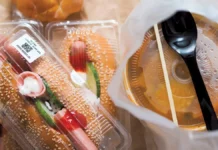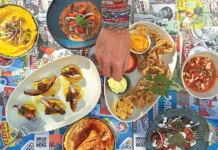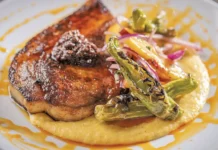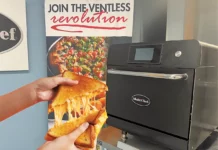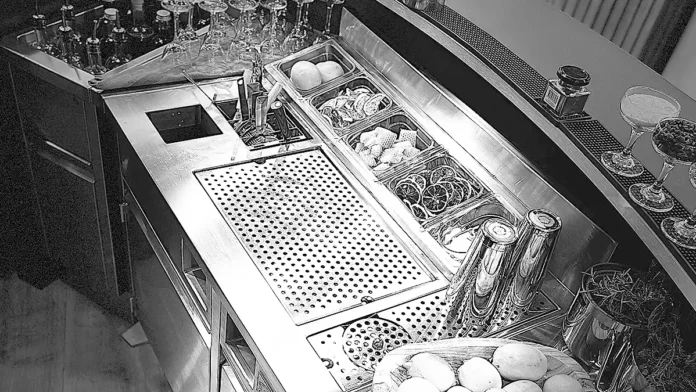
In the two weeks after Beyonce’s song “Texas Hold ‘Em” debuted and quickly hit the number one spot on the Billboard 100, there was a lot of talk about whether the song was country or not.
Is it today’s country? Is it new country? Old country? Let’s go with girl from Houston singing about her home state of Texas and there’s dancing, tornados and whiskey… yes, it is country, okay?
Even if you don’t agree with that you can acknowledge this – history was made as she was the first Black woman to top the 100 chart with a country song. And that’s something new.
It is also a perfect beat to bartend by; a bouncy metronome marking out the time it should take to reach a bottle, glassware, garnish or sink. If you have the right bar set up.
So many American bars do not. That is a huge silent problem for bartenders young and old who are punishing their bodies on every shift, straining, reaching and stretching or heading twelve steps to the other side of the bar for an ingredient.
It is also an issue for guests, even if they can’t articulate exactly what could be better.
Nico de Soto, Cocktail Program Consultant for Experimental Cocktail Club, has no problem articulating what could be better with today’s bars.
When asked what he would change he says, “First of all the height is too low. Most of the bars are too low. Then it would be the space because everything isn’t functional – I have to take five steps or so to reach something.
In the ideal bar, everything is within your reach.
Sire Negri, a veteran bartender whom you’ll find behind bars on the beaches of South Walton, Florida, has reached a point in his career where he has worked at all sorts of bars.
From the ones where you have to duck under the bar top to get out at the end of your shift, to a brand-new bar with wells in front, a three-tiered bottle rack right next to that, then a dump sink.
He looks back at the first bar he worked behind fondly as he recounts how it made every night so much easier when it came to making drinks and keeping customers happy.
“Bartenders shouldn’t have to move more than three feet in any direction,” Negri said. “I loved that bar because everything was right there, and a trash can and glasses were on the other side.”
He stresses the importance of having everything within a close radius to avoid the strain, especially in a serious cocktail program, and he advises, “If I am ever considering going to work somewhere else I always ask – and I think everyone should ask this on their interview – ‘hey, can I peek behind your bar?’”
That peek offers Negri an opportunity to evaluate equipment placement, moving parts like dishwasher doors, ladders and the bartenders’ aisle – the space between equipment and the back bar – to determine how much turning, twisting, shimmying, lifting and bending he’ll have to do nightly.
He admits to making this a priority because he’s not in his 20s anymore, and strongly advises that everyone ask the same questions when sitting down with a potential new manager, as he points out that age doesn’t matter because it’s going to wear on you whether you feel it now or later, “Think about where is this drink production going to go and how is it going to work, and will I be more tired than I should be because I have to make crazy strange movements all shift?”
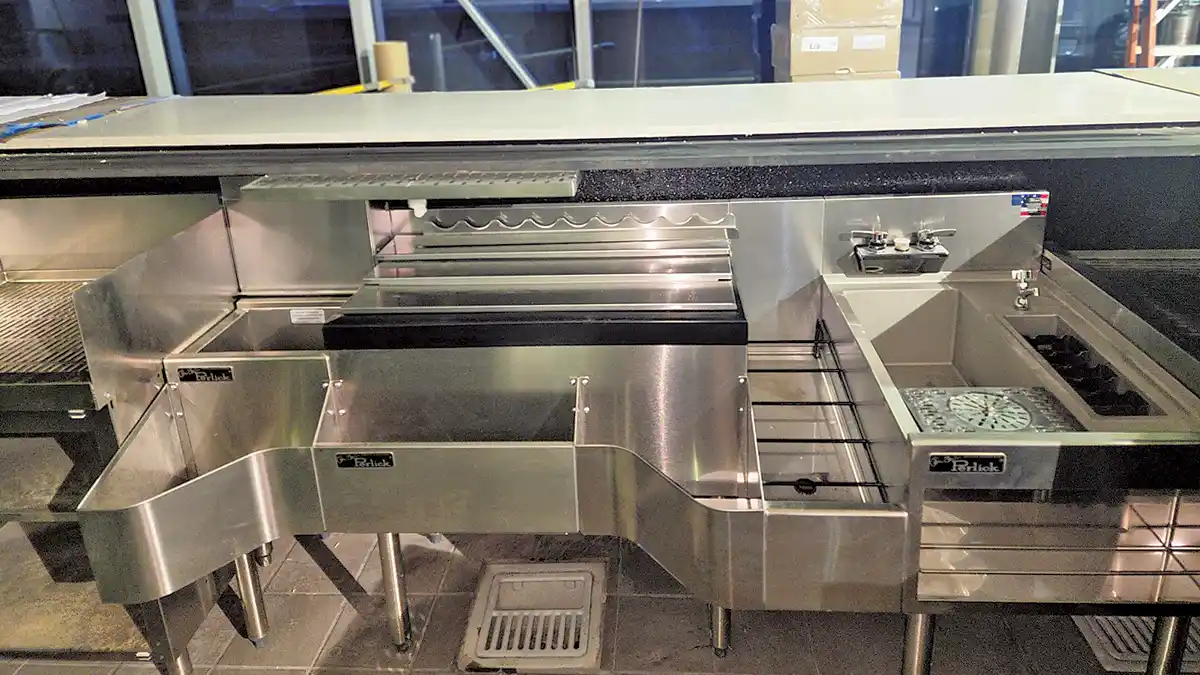
Bar design specialist Tobin Ellis, the founder of Studio Barmagic, agrees. He adds, “When you get a new job you want to see how the bar is laid out. You need to know what I have to deal with every night?”
He knows the stretching, walking too far for something, and contortion issue have been problems for even longer that the last 21 years he has been designing bars.
He points out that when he began working on bar design and then, nine years ago partnered with Perlick to create equipment with his name on it, the Tobin Ellis Signature Series by Perlick – bar designs were pretty antiquated.
He shares, “All the patents for underbar equipment came from the 1950s. This was the first time since the 1950s that any equipment manufacturers thought about redesigning things and considering that maybe there’s a better way. I knew there was.”
He continues, “When I designed the original bartender’s cockpit, I had been seeing all the frustrations of friends and our tribe as they struggled to be as fast and great behind bar as they could be; the equipment was holding them back.”
Daniel Grajewski, the Senior Director of Wine & Beverage Jose Andres Group, was determined to break the cycle when he opened The Bazaar by José Andrés at The Ritz-Carlton New York, NoMad in 2023, and he is thrilled they brought Behind Bars from Oslo on to install the company’s Tayer series bar.
It’s a design based on a hexagon, and rather than having bottles at knee level where bartenders have to lean over, the bottles are easily within reach.
The shape of the bar itself is rectangular, but according to Grajewski, each piece on the top is perforated and can be a flat surface.
“We were really paying attention to ergonomics,” Grajewski said. “When I explain it to people, I often reference European style bars; there they are always using the bar top for service, so they don’t have to start reaching.
So here it is a center island – almost as an open kitchen. The bartenders are in own bubble and have to go just one and a half steps to reach everything they need – bottles, glass, ice, etc.”
Grajewski has had plenty of interviewees come look behind the bar and scratch their heads as it’s a whole new look and way of bartending for American bartenders.
He comments, “Like with anything that’s new it takes a minute to get used to. The first things most bartenders see is confusing; it doesn’t look normal. But soon they understand the concept. It’s so comfortable to work with.”
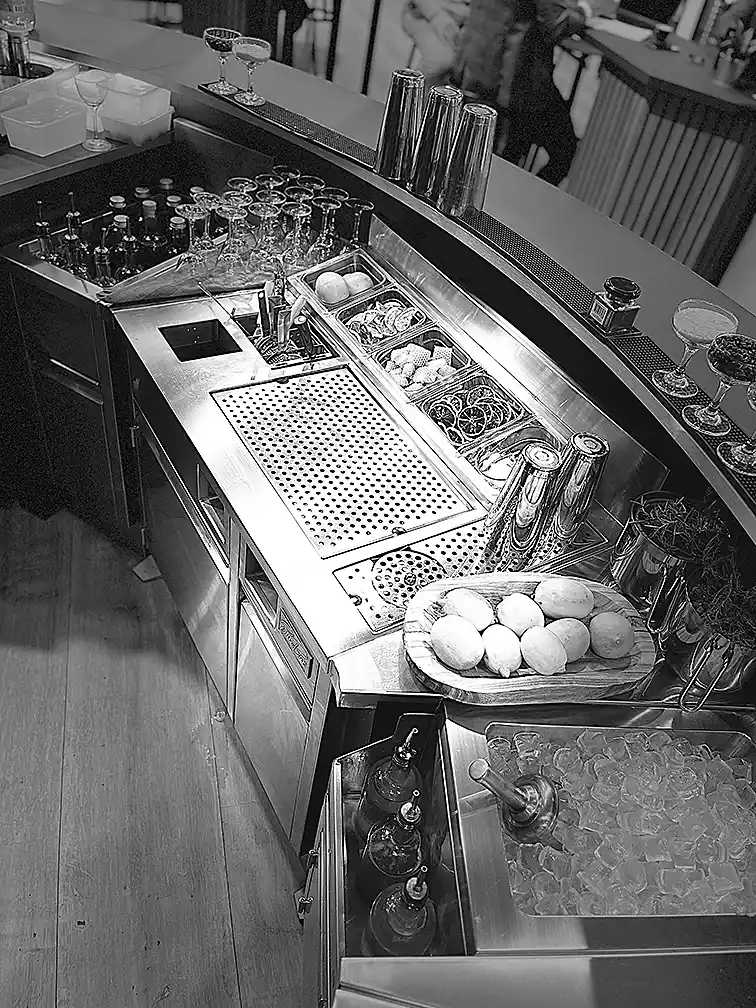
Comfort was top of mind for EuroBar designer Livio Lauro. The pandemic left him plenty of time to contemplate how much he missed those European-style bars where he first got his start.
So, he set out to make something he knew other bartenders would appreciate and created a layout that reduces the bending a lot.
He points out, “With traditional bars you have to make things on top of the bar, at the scupper rail. EuroBar is different in that it does not assume you can only make the drinks on the bar top. It hosts its own area to make drinks with all the bar tools and garnishes; it gives the bartender their own little chef’s prep area and it does so by scooting the ice to the right of the bartender rather than front and center.”
He continues, “It also puts the speed rail to the right hand, which means there’s no bottles poking them, there’s no banging their knees – they can bend forward a little more comfortably. And with more range of motion.”
Both Lauro and Ellis undertook a lot of motion studies, considered OSHA standards, and applied all they learned to creating bars that function smoothly and as comfortably for as many bartender body types as possible, enabling them to pour liquid with their wrist, rather than their arm and shoulders.
Lauro remarks, “Bottles weigh 6 pounds each. So, when you’re picking up two bottles, and then add the weight of your arm and you’re doing this all night long, the impact on your back is something to consider.”
Lauro also considered production speed and functionality when designing EuroBar, just as Ellis always does with his commissions.
Both of them have been advocating for bartenders to have a seat at the design table, and Grajewski, de Soto and Negri agree that it’s about time this happened. It is better for all involved; bartender; operator; and guest.
Ellis comments on why bartender input is crucial to successful design and what kind of thinking a working bartender brings to the table that another designer may not, “It’s understanding exactly how drinks are made and produced and how that differs from bar to bar. You have to know ‘how do I optimize from the simplest beverage programs to the most complex?’ I am always thinking about how I can give an operator the best chance for a profitable bar, and happy bartenders for longest amount of time.”
Things are pretty complex in Andrew Pollard’s world. He is the Director of Mixology, The Venetian Resort Las Vegas, in charge over 60 places on property where one can find a drink between all their pools, bars, restaurants, lounges, and banquet/meeting space.
He recently installed the EuroBar in the resort’s newest restaurant, Sala. The bar’s sleek European efficiency and charm aligned with the resort’s ethos; Pollard points out.
He adds, “It’s a beautiful aesthetic meeting volume cocktail bar. It’s clean and sexy, it has its own mood. But it is also functional and has everything you’d want it to have in a cocktail bar.”
He continues to explain the attraction to both bartenders and guests, “I think the charm of it is to introduce – as we lean into our Italian DNA – the feel and look of delivering on how we are always talking about experiences and destination. Sala which translates to living room is a feel of home. There’s a feel of home for our bar staff. We’re giving them an elevated offering of a place to work from. It is organized, clean, things are hidden. It’s about working down, more organized for functionality and capabilities. While it propels them to think differently, once they become more acclimated to that they can appreciate the model of the European bar.”
With everything right at hand, and post-shift nights no longer spent in a desperate search for aspirin, working on a well-designed and functional bar enables bartenders to be happier.
And provide better, and faster, service. Pollard already installed EuroBar at Sala and intends to put it in when more new concepts open to make sure he can serve the volume of people flooding through the resort.
He says, “There are thousands of people coming through here each day, to every bar we have. We have to be looking at operational efficiencies to be efficient at scale.”
To do that at the level Pollard is operating, or even on a busy night at one of de Soto or Negri or Grajewski’s bars rethinking what bar design is – just like rethinking what country music can be – is important.
And it really only works well when you have the right people on the team. Frankie Stavrianopoulos, the beverage director at Bosa, Haverhill, Massachusetts’ newest Italian spot, loves the team behind the bar they just installed and knows his new beverage team will love it too.
He notes that it is Ellis’ Perlick line, and they chose it because, “Part of what we consider is safety and ergonomic correctness. You have people standing on their feet all day. With this bar everything is placed properly; we have glass washers at our disposal, wells are put in the right position. Of course, at first glance it might look the same – it’s the same stainless. But here there’s an inlet where the well is, versus most bars I’ve witnessed which have an overhang on which you’d knock your knees. You’re actually closer to your customer sitting at the bar than a 6-9” extension you can’t work into. The layout is well done, and it means you’re not swinging around the back bar. If you’re talking about volume for busy nights, you want quick access. It’ll speed things up. We’re in a numbers game. No matter the concept – you want to put out as good a product as quickly as possible.”
De Soto considers his bartenders and guests as he looks to the reality of the past and shares hope for the future.
He concludes, “When you come to a bar most of it is horribly designed. They don’t think about the bartenders in the bar. Maybe now they will.”
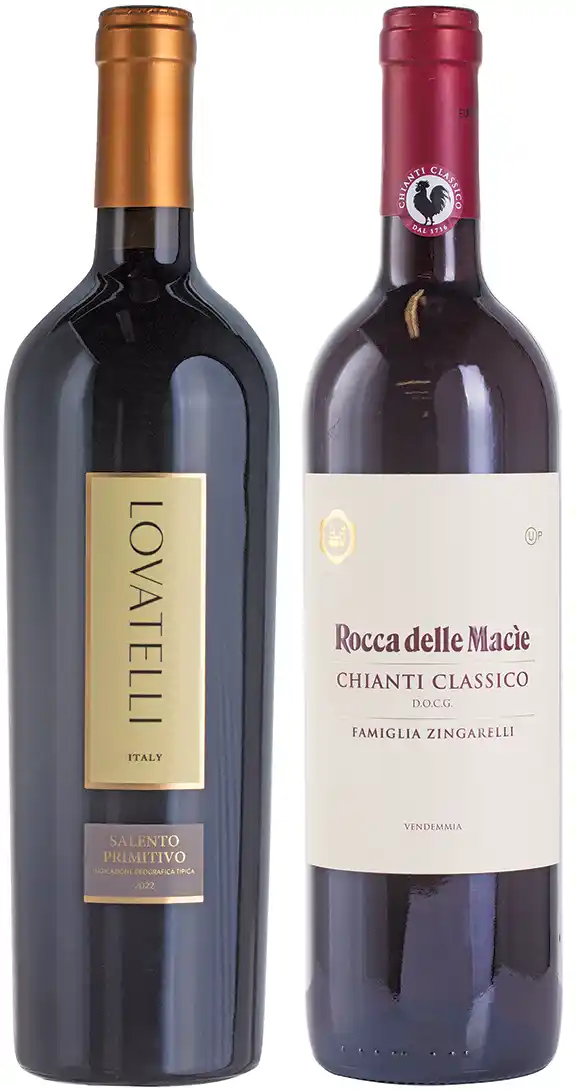
SIPS TO SAVOR
Spring is a time for new beginnings, and the upcoming holidays are the perfect time to explore some new wine options for your menu.
While we realize that not everyone needs a kosher wine, it is impossible to ignore that the demand for kosher wine is growing in the US.
So, to keep up with the trends, and satisfy the palates of kosher and non-kosher wine drinkers alike, not to mention opening your doors to more potential guests, check out some of these new options and you’ll surely make everyone’s holiday season happy.
The world famous Rocca delle Macie is producing a kosher Chianti Classico for the first time. Exclusively for Royal Wine Corp. (with more to come); SRP $25.
Presenting, Lovatelli – a new line of fine and affordable Italian wines. Currently available are a Salento Primitivo, SRP $17 and a Barbera d’Asti, SRP $25.Coming soon: a Nebbiolo, a Super Tuscan, and two new vermouths.
The next generation is committed to beautiful, kosher Tuscan wines. Cantina Giuliano is a fully kosher boutique winery started in 2014 in Tuscany, Italy.
The winery was started by a young couple, who inherited wineries from their grandparents. It’s now fully kosher with new bottles and labeling.
Looking for something a red from elsewhere, or a white? Check out selections from South Africa’s ESSA and J Folk wineries for Chenin Blanc, and more.
Plenty of selections for your Passover and/or Easter table.


















